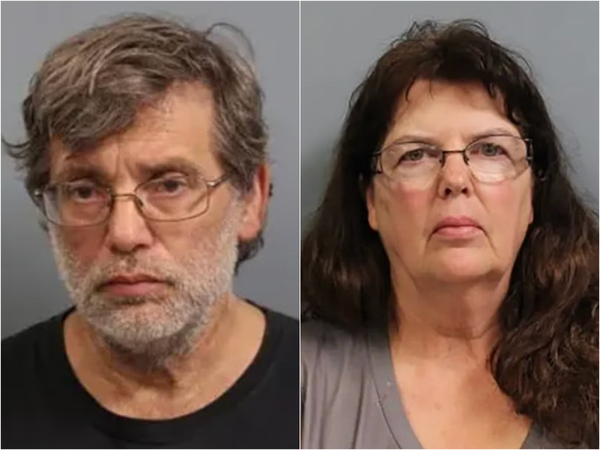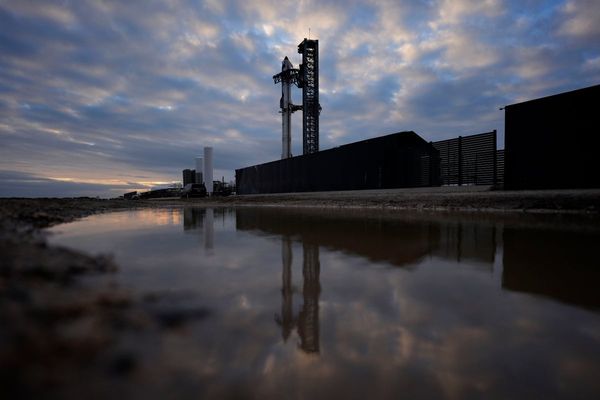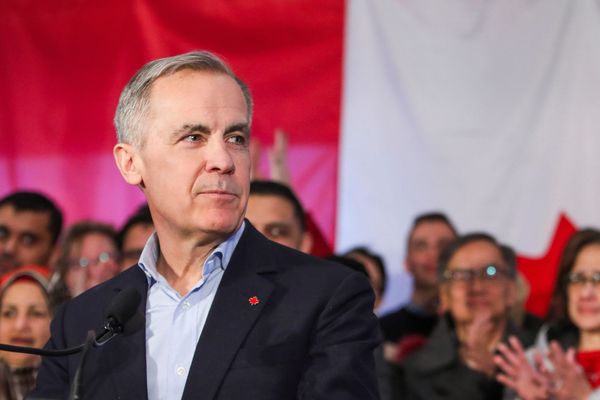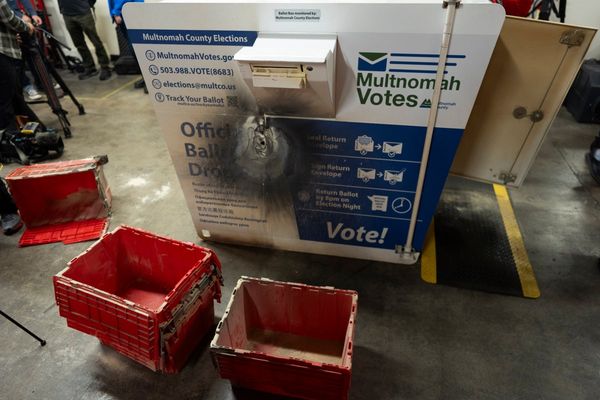
Miss Navajo Nation Shaandiin P. Parrish grabs a box filled with food and other supplies to distribute to Navajo families in Counselor on the Navajo Nation Reservation, New Mexico, on May 27. Sharon Chischilly/Getty Images
It was in 1832 that the U.S. government first began delivering health care to Indigenous communities. Congress allocated $12,000 to vaccinate those living in nations near white frontier settlements against smallpox.
Washington’s aims were not pure. Indigenous nations were not consulted on the program, while an early advocate for Indigenous health said it was delivered in a “feeble, unsystematic” way. Vaccinations predominantly went to nations who had signed economic treaties with the U.S. government. A smallpox epidemic in 1837, around what is presently North Dakota, killed more than 10,000, nearly destroyed entire tribes, and caused entire cultures and traditions to disappear forever.
Nearly two centuries on, amid another epidemic, Indigenous communities are once again being excluded from the decision-making process in Washington even as COVID-19 devastates their communities.
It comes as the U.S. government distributes more than $150 billion in economic relief to governments hit hard by COVID-19.
But more than a dozen Indigenous organizations from across the United States warned, starting in early April, that if the administration of President Donald Trump did not listen to tribal governments, they ran the risk of turning the relief package into a “grave injustice.”
At the heart of the problem is how the Trump administration intends to use the funds authorized in the Coronavirus Aid, Relief, and Economic Security (CARES) Act, which authorized some $2.2 trillion in economic aid.
The act set aside $8 billion for tribal governments. It was written in such a way, however, that included Alaska Native regional and village corporations (ANCs)—for-profit enterprises often run by local tribes in the state. Normally, ANCs don’t receive that type of funding.
Native Americans of the Navajo Nation pick up supplies at a food bank set up in Casamero Lake, New Mexico, on May 20. Jonathan Nez, president of the Navajo Nation, said that of the $8 billion promised to U.S. tribes in the March stimulus package, the first set of vital coronavirus aid wasn’t released until May. MARK RALSTON/AFP via Getty Images
Many tribes and Indigenous governments warned Treasury Secretary Steve Mnuchin, in letters sent throughout April, that giving for-profit companies a share of the relief funding would be inappropriate and could lead to some tribes double dipping. The competition for federal funding has long faced allegations that it is fundamentally unfair and unequal. Small tribes have had to spend scarce resources to hire lobbyists and application writers just to receive core funding to provide basic services. Larger tribes, with more considerable revenue, have an easier time vying for contracts and grants.
The collection of tribes pleaded with Washington to distribute the money “in manner consistent with the intent of Congress as an expression of their understanding and respect for Tribal sovereignty.”
While Mnuchin’s office insisted that no final decision had been made, it did not rule out the possibility that Alaskan development bodies would have access to the cash. And so several tribal governments took the treasury secretary to court, warning that the decision to include ANCs as eligible for federal relief funds could set a precedent that may extend far beyond the pandemic.
In court filings, the Cheyenne River Sioux Tribe, whose reservation has a population of just 10,000, reported facing $1 million in additional costs per week because of COVID-19.
While Indigenous peoples haven’t always had success before the courts, there has been real momentum of late. In July, the Supreme Court recognized roughly half of Oklahoma as Indigenous land, in a ruling that will have far-reaching consequences in the state justice system and beyond.
In late June, however, a federal district court sided with the Trump administration, dismissing fears that the move could create a precedent. “The court’s decision simply recognizes that ANCs are eligible for CARES Act funds, as Congress intended—no more, no less.” The tribes successfully filed for an injunction from the court to stop the money from being distributed to the Alaskan corporations while they file an appeal.
The ongoing litigation has led to delays on both sides. Tribes told news site Indianz.com that their funding was still being held up as of mid-June—months after it was supposed to arrive— with a Department of Justice lawyer admitting some $679 million was being withheld because of the lawsuit. On the other side, one Alaskan native corporation told the court that the litigation has tied up funds promised to them. “Without immediate access to these funds, our villages could face a very difficult winter,” the company, Ahtna, wrote in an affidavit.
As the legal wrangling continues, the picture on the ground is disastrous.
The Indian Health Service (IHS) reports there have been nearly 33,000 COVID-19 cases reported to IHS, tribal, and urban Indian health organizations. In May, the outbreak in the Navajo Nation surpassed New York as the highest infection rate in the country—today, its infection rate is double any state. Today, the nation has more cases, in terms of raw numbers, than several states.
A community bulletin board stands at the entrance to the East To’Hajiilee housing community in To’Hajiilee Indian Reservation, New Mexico, on May 25. Sam Wasson/Getty Images
And while the funding threats and lack of resources threaten everyone, Indigenous elders—sometimes the only remaining speakers of nearly lost languages—face particular danger.
In recent years, there have been furious efforts to collect Indigenous histories and preserve nearly lost Indigenous languages. COVID-19 threatens to undo much of that work as it cuts through the elderly population.
“COVID-19, like many diseases, renders Indigenous elders—our knowledge-keepers and language holders—particularly susceptible to illness and death,” wrote Gina Starblanket and Dallas Hunt, two Indigenous professors and writers in the Globe and Mail in late March. “This virus not only places us at risk, but the future well-being of coming generations as well.”
The scope of the problem may be even larger, as many states and cities have spotty data collection policies around race, often categorizing Indigenous peoples as “other,” if their race is collected at all.
When Hawaii finally started releasing race and ethnicity data, after months of pressure, it found that Native Hawaiians and other Pacific Islanders had the state’s highest rate of COVID-19 cases.
Most Indigenous nations took swift action to combat the virus, enacting lockdowns and stay-at-home orders even as their state governments were not. Yet poor infrastructure and disparate health care funding have been significant drivers of the high numbers.
According to the IHS, life expectancy for Indigenous people in Alaska and the lower 48 states is five and a half years shorter than the national average—a disparity driven by higher rates of diabetes, liver disease, kidney disease, suicide, homicide, accidents, and a raft of other causes. Influenza and pneumonia kill Indigenous people at a rate 1.8 times higher than the U.S. average.
The poorer outcomes correlate strongly with a lack of funding. The IHS itself offers free—if critically underfunded—care. As of 2017, the U.S. government’s health care spending, overall, was more than $9,700 per person. That figure was about $4,000 per capita for those in the Indian Health Service.
Indian Health Services provides comprehensive service for about 2.2 million of the 3.7 million Indigenous people in the United States. Those populations are dispersed, with some living in some of the most remote and sparsely populated parts of the country. With its $6 billion budget, IHS runs 26 hospitals directly and transfers funding for another 19 tribe-run hospitals. That means the entirety of Indian Country has roughly the same number of hospitals as Connecticut. (IHS funding does run about 600 smaller health stations and clinics throughout the country.)
Marlene Thomas hands out homemade masks while Navajo families wait in line to receive food, water, and other supplies in Counselor on the Navajo Nation Reservation, New Mexico, on May 27. Sharon Chischilly/Getty Images
A scathing 2016 review found too few staff, trouble attracting talent, inadequate services, and aging IHS-run hospitals that were not designed to provide modern health care.
There have been numerous attempts to close these gaps, but the failure to do so is now putting Indigenous people at particular risk of COVID-19.
In 1996, Washington set up a system of Tribal Epidemiology Centers, which were tasked with “activities ranging from … public health surveillance, local, national and regional infrastructure and capacity building, to infectious disease outbreak response.”
They have been consistently underfunded, however, with each of the dozen health centers scattered across the country receiving just $339,000 over the past five years. “This is not nearly enough to do this important work,” the House Appropriations Committee in 2015 wrote to the IHS, asking “Why does the agency believe that this work does not merit an increase?” The IHS blamed competing funding priorities.
The Trump administration promised a nearly 25 percent increase in its 2021 budget.
The long-term underfunding and the held-up earmarked money have left nations struggling to cope. “It is clear that they have been insufficient to address the grave impacts of COVID-19 in Indian Country,” Stacy A. Bohlen, CEO of the National Indian Health Board, told a House subcommittee in June. Bohlen stressed that one-time emergency funds “do not replace the need for strong and meaningful investments in the annual appropriated IHS budget.”
For example, Bohlen pointed to the Democrat-written HEROES Act, which would commit $30 million for water and sanitation systems in Indian Country. She noted that a 2018 estimate from the Indian Health Service pegged the necessary investment to bring all communities to an acceptable level of sanitation and water quality at $2.7 billion.
This Navajo house near the town of Steamboat, Arizona, pictured May 24, has no running water. An estimated 30 to 40 percent of Navajo sovereign territory’s 178,000 residents don’t have access to running water or sanitation. MARK RALSTON/AFP via Getty Images
Serious infrastructure problems are another burden for Indigenous health. Nearly one-third of Navajo residents do not have running water. Nonprofit DigDeep has recently organized a donation of more than 260,000 gallons of bottled water for the nation.
The disproportionate impact on Indigenous communities in the United States has been mirrored worldwide.
In Brazil, the nation hit hardest by COVID-19 after the United States, Indigenous tribes are being ravaged by the virus. According to the Pan American Health Organization (PAHO), Brazil has seen nearly 8,000 COVID-19 cases among its Indigenous population—177 have died, including a 15-year-old. Numerous elders have also died from the virus, raising concerns that the culture and history of their peoples are being lost entirely.
It’s even more acute in Bolivia, with its sizable Indigenous population, where more than 1,100 Indigenous people have died, according to PAHO. Mexico has seen close to 650 such deaths, Ecuador nearly 150, and Colombia 73.
- Witoto Indigenous nursing assistant Vanda Ortega, 32, takes care of a patient during a health care visit in Parque das Tribos, an Indigenous community in the suburbs of Manaus, Amazonas state, Brazil, on May 3. RICARDO OLIVEIRA/AFP via Getty Images
- A Bolivian Aymara Indigenous woman enters a disinfection tunnel to combat the coronavirus in El Alto, Bolivia, on April 15. AIZAR RALDES/AFP via Getty Images
Some countries have done better than others.
Venezuela has reported just 152 cases among its Indigenous populations. Canada, with an Indigenous population north of 1.6 million, has reported just 334 cases and six deaths. Entire swaths of the country, largely remote Inuit communities, have been shut to outsiders.
When a ferry, believed to be carrying campers and tourists, set out for Haida Gwaii territory earlier in April, a convoy of cars set out to protest the travelers and send a message: “You’re not welcome,” as one member of the nation told the Canadian Broadcast Corporation. In the end, it appears all of the passengers were essential workers or residents, though the protest sent a message—with just 12 hospital beds and two ventilators on the island, the Haida can’t afford any infections.
Facing a lack of resources to surveil and stop the spread of the virus, nations inside U.S. borders have taken drastic measures. Roadblocks, checkpoints, and curfews have been erected around Indigenous nations through most of the United States. Many have remained up, even as states have moved to reopen.
The Crow Tribe, in Montana, issued an order in March, declaring: “This is a time of war to fight a pandemic that has invaded the world.” Karl Little Owl, the chief operating officer of the tribe who manned one of the checkpoints, told the Billings Gazette, “We don’t have any cases on the reservation and we want to keep it that way.” The nation has extended their stay-at-home order until Aug. 31.
Nations across the United States and Alaska have taken similar steps.
Those restrictions, however, mean billions in lost revenues for tribal governments, only exacerbating the chronic underfunding on the federal level. The Navajo Nation’s gaming corporation has laid off over 900 staff out of 1,200 people, and the remaining jobs are still in jeopardy.
But nations say the costs are worth it. Sharon Stewart-Peregoy, a Montana state representative and member of the Crow Nation, told Kaiser Health News that the lockdown measures taken have been necessary to protect older populations. “When an elder dies, there’s a whole history, a whole line of information that we lose,” she said. “It’s like the library burning down.”














